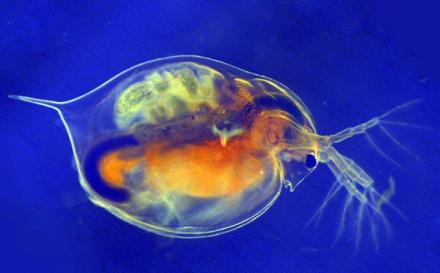Aquatic ecosystems are characterized by fluctuating conditions that have direct effects on aquatic communities but also indirect influences such as changing the toxicity of chemicals. Because the effect of food quality on pesticide toxicity has rarely been studied, in the present study Daphnia magna juveniles supplied with 4 different food quality levels were exposed to a range of imidacloprid concentrations for 21 d. Food quality was expressed as carbon:phosphorus ratios of algae Pseudokirchneriella subcapitata (C:P 35, C:P 240, C:P 400, and C:P 1300). Survival, growth rates, and reproduction of D. magna were monitored, and the combined effects of imidacloprid exposure and the phosphorus content of algae were analyzed. A stronger effect on survival was observed at the P-deficient diet (C:P 1300), confirmed by lower 10% effect concentration (EC10) values at days 7, 9, 15, and 21 compared with diets with higher phosphorus contents. Similarly, the growth rate was reduced when D. magna were supplied with algae of low phosphorus content at imidacloprid exposure conditions. The highest reproductive output was observed for D. magna fed the optimal phosphorus diet (C:P 240), both at control and exposed conditions. Poor food quality increased the sensitivity of nontarget species to pesticide exposure, potentially leading to an underestimation of adverse effects on aquatic communities in the field.
Source:
Ieromina, O., Peijnenburg, W. J.G.M., de Snoo, G., Müller, J., Knepper, T. P. and Vijver, M. G. (2014), Impact of imidacloprid on Daphnia magna under different food quality regimes. Environmental Toxicology and Chemistry, 33: 621–631. doi: 10.1002/etc.2472
http://onlinelibrary.wiley.com/doi/10.1002/etc.2472/abstract?deniedAcce…

- Login om te reageren
